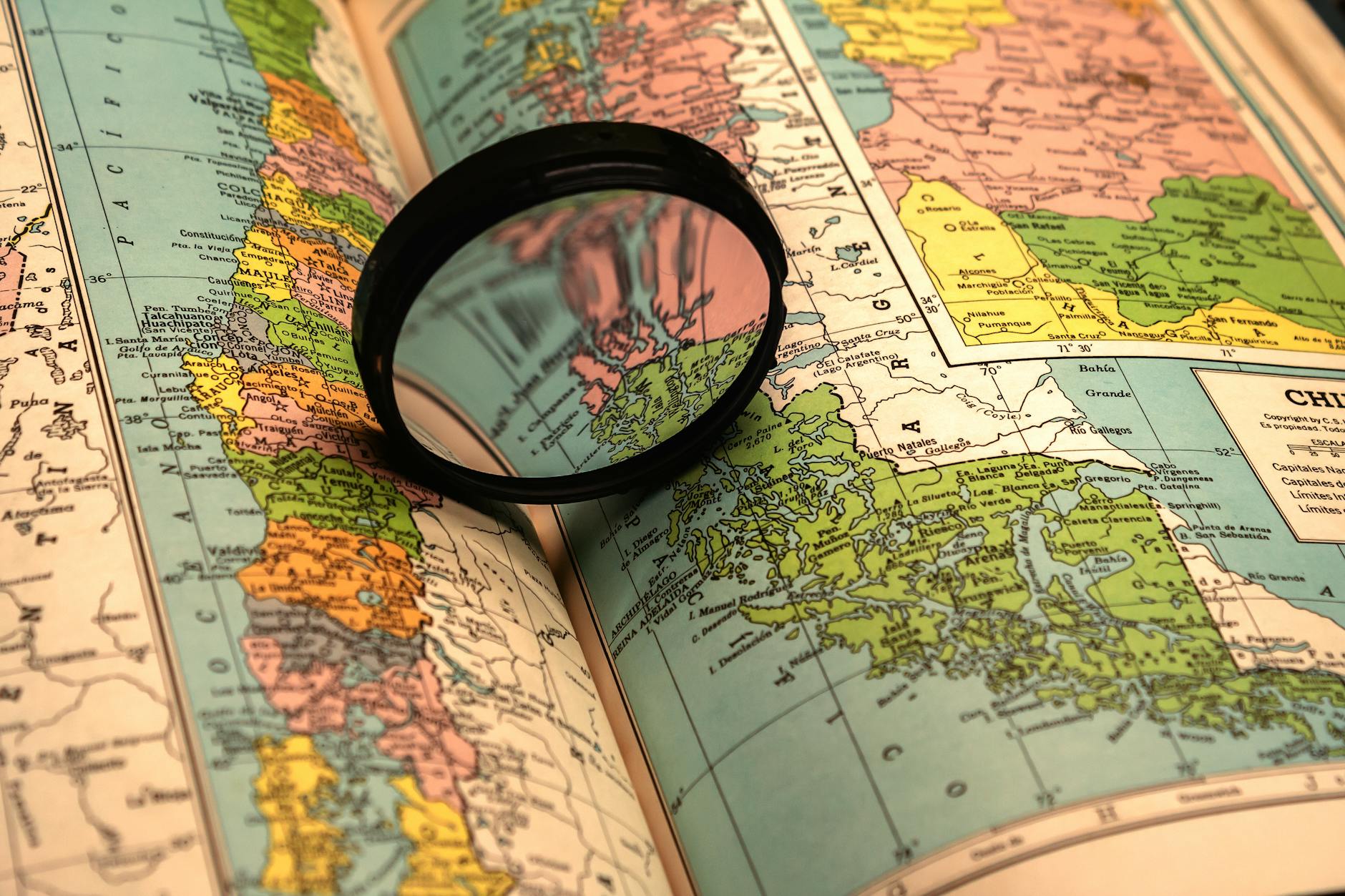The seven continents are the large landmasses that make up our planet: Asia, Africa, North America, South America, Antarctica, Europe, and Australia (also called Oceania). These massive areas of land contain all of Earth’s countries, cities, and natural wonders. Each continent has its own unique features, climates, and cultures that make our world incredibly diverse.
- How Do We Define a Continent?
- Asia: The World's Largest Continent
- Africa: The Cradle of Human Life
- North America: Land of Diversity
- South America: A Continent of Extremes
- Europe: Small but Mighty
- Antarctica: The Frozen Continent
- Australia/Oceania: The Island Continent
- Why Understanding Continents Matters
- Quick Continent Facts for Easy Reference
- Conclusion
How Do We Define a Continent?
A continent is a large, continuous piece of land that’s separated from other landmasses by oceans or other geographic features. While scientists sometimes debate exact boundaries—especially between Europe and Asia—most educational systems worldwide recognize these seven distinct continents.
Asia: The World’s Largest Continent
Size and Population
Asia spans over 17,212,000 square miles (44,579,000 square kilometers) and comprises about 30.0% of Earth’s total land area. Asia is the most populous continent by a significant margin, with roughly 60 percent of the world’s population living there.
What Makes Asia Special?
Asia stretches from the frozen Arctic Ocean in the north all the way to the warm Indian Ocean in the south. This enormous continent includes 48 different countries, from economic powerhouses like China and Japan to smaller nations like Bhutan and Singapore.
Famous Geographic Features
- Mount Everest: Reaching an elevation of 29,032 feet (8,849 meters), Mount Everest is the highest mountain in the world
- The Caspian Sea: The world’s largest lake
- Lake Baikal: The world’s deepest freshwater lake
- Major cities: Tokyo, Delhi, Shanghai, and Mumbai
Africa: The Cradle of Human Life
Size and Population
Africa covers approximately 11.6 million square miles and is home to over 1.4 billion people living in 54 different countries. Scientists believe Africa is where modern humans first evolved millions of years ago.
Geographic Wonders
Africa contains some of the world’s most famous natural features:
- The Sahara Desert: The world’s largest hot desert
- The Nile River: The world’s longest river at 4,135 miles
- The Congo Rainforest: The second-largest tropical rainforest after the Amazon
- The Great Rift Valley: A massive geological formation stretching thousands of miles
Cultural Diversity
Africa speaks over 2,000 different languages and hosts countless ethnic groups, making it one of the most culturally diverse continents on Earth.
North America: Land of Diversity
Size and Countries
North America covers about 9.5 million square miles and includes 23 countries, from large nations like Canada, the United States, and Mexico to smaller Caribbean islands and Central American countries. About 580 million people call North America home.
Climate and Geography
This continent offers incredible variety:
- Arctic tundra in northern Canada and Alaska
- Temperate forests across much of the United States and southern Canada
- Vast grasslands called the Great Plains in the center
- Deserts in the southwestern United States and northern Mexico
- Tropical areas in Central America and the Caribbean
Notable Features
- The Rocky Mountains: Stretch along the western coast
- The Mississippi River: One of the world’s longest river systems
- The Great Lakes: The largest group of freshwater lakes on Earth
- The Grand Canyon: Carved by the Colorado River over millions of years
South America: A Continent of Extremes
Size and Population
South America spans about 6.9 million square miles across 12 countries and supports approximately 430 million people. This continent showcases some of Earth’s most extreme environments.
Amazing Geography
- The Amazon Rainforest: The world’s largest tropical rainforest, often called “the lungs of the Earth”
- The Andes Mountains: The world’s longest mountain range, stretching over 4,300 miles
- The Atacama Desert: One of the driest places on our planet
- The Amazon River: Flows about 4,000 miles from Peru to Brazil
Biodiversity
The Amazon Basin alone contains an estimated 10% of all species on Earth, making South America incredibly important for global biodiversity.
Europe: Small but Mighty
Size and Influence
Though Europe covers only about 3.9 million square miles, making it the second-smallest continent, it’s home to roughly 750 million people across 44 countries. Despite its smaller size, Europe has had enormous influence on world history and culture.
Geographic Features
Europe’s landscape includes:
- Scandinavian fjords in Norway
- Mediterranean beaches in Spain, Italy, and Greece
- The Alps mountain range
- Vast plains in Eastern Europe
- Major rivers like the Danube, Rhine, and Thames
Historical Importance
Europe gave the world the Renaissance, the Industrial Revolution, and many democratic principles we use today. The European Union represents one of the world’s largest economies and shows how countries can work together.
Antarctica: The Frozen Continent
Size and Conditions
Antarctica covers about 5.4 million square miles—roughly twice the size of Australia. No people live there permanently, but scientists from many countries operate research stations year-round.
Extreme Environment
Antarctica holds several world records:
- The coldest continent (temperatures can drop to -112°F or -80°C)
- The driest continent
- The windiest continent
- Contains about 90% of the world’s ice and 70% of its fresh water
Importance to Our Planet
Even though it seems remote, Antarctica plays a crucial role in regulating Earth’s climate and ocean systems. The ice reflects sunlight back to space, helping keep our planet from getting too warm.
Australia/Oceania: The Island Continent
Size and Unique Features
Australia covers about 3.3 million square miles, making it the smallest continent. When grouped with surrounding Pacific islands as Oceania, the region supports roughly 45 million people.
What Makes It Special?
Because Australia was isolated from other continents for millions of years, it evolved unique animals found nowhere else on Earth:
- Kangaroos and wallabies
- Koalas
- Platypus
- Tasmanian devils
Natural Wonders
- The Great Barrier Reef: The world’s largest coral reef system, stretching over 1,400 miles
- The Outback: Vast desert regions covering much of central Australia
- Uluru (Ayers Rock): A massive sandstone formation sacred to Aboriginal peoples
Why Understanding Continents Matters
Learning about the seven continents helps us understand:
- Climate patterns: How weather systems work across large areas
- Cultural diversity: The many different ways people live around the world
- Economic connections: How countries trade and work together
- Environmental challenges: Issues like climate change that affect everyone
Each continent contributes something special to our world—from Asia’s technological innovations to Africa’s rich cultural heritage, from Europe’s historical achievements to the natural wonders found across all continents.
Quick Continent Facts for Easy Reference
Largest to Smallest by Area:
- Asia – 17.2 million square miles
- Africa – 11.6 million square miles
- North America – 9.5 million square miles
- South America – 6.9 million square miles
- Antarctica – 5.4 million square miles
- Europe – 3.9 million square miles
- Australia/Oceania – 3.3 million square miles
Most to Least Populated:
- Asia – About 4.6 billion people
- Africa – About 1.4 billion people
- Europe – About 750 million people
- North America – About 580 million people
- South America – About 430 million people
- Australia/Oceania – About 45 million people
- Antarctica – No permanent residents
Conclusion
The seven continents showcase the incredible diversity of our planet. From Asia’s bustling cities to Antarctica’s pristine wilderness, from Africa’s cultural richness to Europe’s historical significance, each continent offers unique contributions to our global community. Understanding these landmasses helps us appreciate the complexity and beauty of Earth while recognizing how all continents connect through shared oceans, weather patterns, and human experiences.
Disclaimer: This article provides general educational information about world geography. Population and area figures are approximate and may vary depending on different sources and measurement methods.



